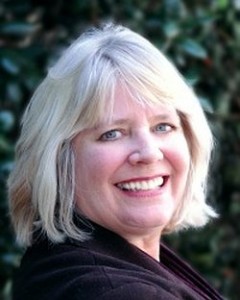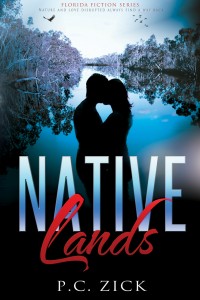Author Spotlight – P.C. Zick and “Native Lands”
Please welcome fellow indie author P.C. Zick to the blog…
P.C. Zick began her writing career in 1998 as a journalist. She’s won various awards for her essays, columns, editorials, articles, and fiction. She describes herself as a “storyteller” no matter the genre.
She’s published five works of fiction and two nonfiction books.
She was born in Michigan and moved to Florida in 1980. She finds the stories of Florida and its people and environment a rich base for her storytelling platform. Florida’s quirky and abundant wildlife – both human and animal – supply her fiction with tales almost too weird to be believable.
Her fiction contains the elements most dear to her heart, ranging from love to the environment. In her novels, she advances the cause for wildlife conservation and energy conservation. She believes in living lightly upon this earth with love, laughter, and passion.
“This is one of the most exciting times to be an author,” Ms. Zick says. “I’m honored to be a part of the revolution in writing and publishing.”
You can find all her books at Amazon
Her novel is “Native Lands”
Native Lands is a novel rich in intrigue and history as a tribe of Native Americans, thought to be extinct, fight to save their beloved heritage. They join with others willing to sacrifice everything to save further destruction of the Everglades and St. Augustine.
Forbidden loves, deceptions, and murder threaten to destroy nature and families in a saga stretching from the 1760s to the present day.
Join Locka and Mali as they lead their tribe of Timucuans away from the Spanish near St. Augustine in 1760 and settle into a new life in the Everglades alongside the Calusa Indians. Their progeny grow up in the Everglades, attempting to keep their bloodlines pure.
By 2010, Mangrove Mike, Joey Cosmos, and Rob Zodiac live among the white people and learn that the human connection transcends the fear of extinction of their people. Barbara Evans in the Everglades and Emily Booth in St. Augustine are the glue as the different cultures combine forces to fight a conglomerate of international interests.
It’s a dangerous journey as this oddly matched group attempts to halt the destruction of the natural world they treasure. Cultural boundaries established centuries ago are erased as love and nature seek the balance lost during the battle for power and control of the last of the Florida frontier.
You can get “Native Lands” – along with nine other fantastic novels (editor’s note – one of my books is in there, too!) in the outstanding collection “At Odds With Destiny”, available now at Amazon.
And here’s a guest post from the author…
When I first moved to Florida, landscapes unfettered with billboards and condos drew me to the beaches. Within twenty years, those miles of sea, dunes, and sea oats were gobbled up by bulldozers and large plastic oranges advertising, “free Disney tickets.”
Patches of wilderness existing as pockets in large coats of urban sprawl still exist. Wildlife has been pushed out of their habitat, forcing them to visit subdivisions and malls, wondering where the trees went. Dangers lurk on the highways and streets that were once their homes. Bears climb trees, coyotes eat domestic cats, and alligators jump in the backyard pool. Those scenarios don’t end well for the wildlife as many times the best course of action is to kill the animal rather than attempting to relocate. Interstates crisscross the state putting the wildlife in even more danger when they attempt to find the wilderness.
I learned the stories of some wildlife, such as the Florida panther, and wondered how something as beautiful and majestic as the panther could simply disappear. Once roaming freely around the state, by the 1960s the panther only existed south of Lake Okeechobee. And their numbers had dwindled to perhaps twenty. That’s a dangerous number of animals–cause enough to not call them endangered, but actually extinct. Inbreeding, along with overdeveloped lands with no place to roam, brought disease to those still existing. The wildlife managers got involved and brought in the Texas panther, a species very similar to Florida’s version. That introduction saved the panther in Florida. Today they have been brought back to a population of 200 and probably more.
The stories of the people of Florida also gave me pause. The Timucuans, as named by the Spanish, were the native population in the northern part of the state. As the history books state, within 200 years of the Spanish arrival, these people were extinct. Extinct—such a horrific term to use about any living thing, but if what the historians reported could be counted on as fact, the Timucuans vanished at the hands of disease, unable to acquiesce to the Spanish, both physically and mentally. The story seemed unrealistic to me. By all accounts, the Timucuan were smart and large, much larger than the Spanish. Would they really allow all of their people to simply disappear?
Several years ago, back in 2005, I was writing freelance articles for various Florida newspapers and magazines. I did a piece on mangroves and their importance to the ecosystem. In the first waves of Florida’s explosive expansion in the 20th century, mangrove forests were completely destroyed in the southern part of the state. Those mangroves are a host species for birds, animals, plants, and fish. When they are destroyed so are those dependent upon them. And it can even effect species indirectly in other ecosystems.
I began thinking about extinction and how the destruction of one thing creates a ripple effect for the whole structure of life. That’s when I began conceiving of the idea for Native Lands.
In the novel I wrote, the Timucuans did not suffer extinction; they went undercover in a place the Spanish would not venture. Not many except for the native Floridians could survive the harsh conditions of the Everglades, so I imagined a world where a small group of them left north Florida and headed south to join with the natives in the river of grass before almost all of them—the Calusa—escaped to Cuba. Their story of survival in Native Lands parallels that of the Florida panther. Nearly decimated from human interference in Florida, the panther population received rejuvenation from the introduction of the Texas cougar, a species of cat very similar to Florida’s variety. Today, biologists estimate the population of the Everglades cougar at two hundred.
Through the story of survival of the Timucuans, I wove the stories of the mangrove and the panther, bringing Florida’s past, present, and future together in one novel to show how we are all interconnected. When we destroy one thing, we are all diminished.
Native Lands celebrates nature and the ability of a small community of like-minded souls to conquer the worst enemies in order to survive.
Last but not least, here’s an except from the book…
Blood dripped from the spear as Locka wrenched it from the dead man’s chest. He reached down, rubbed the soldier’s blood on his hands, and smeared it on his face.
“He won’t bother you again.”
“Thank you, Locka,” she said. “I was certain he was going to kill me or take me back to the fort.”
Locka wiped the blood off his spear with his bloodstained fingers.
Their blood is the same color as mine, he thought. A chill descended over him, despite the heat of the morning air.
He looked down at the man he’d stabbed through the heart.
“Go back to the village now. I’ll take care of the body,” he told Mali as she attempted to cover herself with the moss the Spanish soldier had ripped from around her neck and from her waist. “Stay to the estuary.”
She reached to touch his arm, but Locka pulled away, turning his attention to the dead man.
“I’ll cover him at the base of the burial mound.”
“Do you scalp him like the rest before burying him?” Mali asked.
“No, and I teach my warriors not to do it either, but they are young and foolish,” Locka said. “I hate these white men who’ve taken over our land, but I respect the soul of all living things. Now go back, and tell the others to stay close to the village today.”
Mali nodded, and then headed back to Seloy.
He dragged the body by its boots to the line of trees away from the water. When he came to the base of a mound twelve feet high, he dropped the boots and began digging a shallow grave with his spear. If the animals came and dug him up, so be it. He had at least made the effort to bury him.
When he finished, Locka stood and looked east to the estuary and the river beyond. The sun was higher now, and the water was receding from the mud flats. On the opposite bank of the river, Locka could see the dunes thick with the orange sunflowers and yellow daisies of spring. Tall and spindly sea oats waved in the wind. He couldn’t see the ocean beyond because the land was so flat and the dunes were taller than his six-foot four-inch height, but he could hear the waves.
Now that the water was receding, he could go to the weir and see if he’d captured any fish in the nets. He’d also try to fill up his pouch with whelk and oysters.
Locka climbed another mound, this one made from centuries’ worth of shells thrown there by his people. His eyes took in the different landscapes. He’d missed living near the sea. The Seloy had returned from their wintering site deep in the woods to the west a few weeks ago. He pulled his thoughts from the violence of a few minutes earlier to the sights and sounds of the marsh and the ocean beyond. Balance slowly returned to his blood.
He watched as the egrets and ibis pecked in the mud for food. A lone great blue heron stood on the edge of the water, patiently waiting for a fish to appear. A pelican flew close over his head spying to see if he had any fish he was willing to sacrifice. His village lay to the west in a low-lying canopy of live oak trees weathered by the constant salt breezes. He surveyed the river immediately in front of him and let his gaze wander south to the settlement of St. Augustine.
The peace of the moment disappeared as he thought of the Spanish. They called his people Timucuans.
“We are Seloy,” Locka shouted to the wind as he tilted back his head with its tall top knot. He raised his tattooed arms and shook his fists at the fort on the riverbank.
The Spanish worked continuously to clear land to build houses and churches. They ripped trees from their roots as a black bear ripped the meat from fawn’s bones. Locka’s heart broke every time he thought of it.


2 Replies to “Author Spotlight – P.C. Zick and “Native Lands””
Loved the interview! So wonderful to learn more about PC Zick’s work.
Thank you so much for featuring me, James. I’m delighted to be a part of the At Odds With Destiny box set.